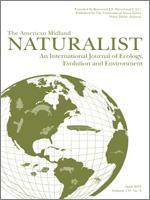Beaver (Castor canadensis) can help to restore wetlands and mitigate the effects of climate change on hydrological regimes in some areas. Therefore, ongoing resource management efforts seek to promote the presence and persistence of beaver populations. The long-term success of such endeavors requires an understanding of what conditions are conducive to sustaining beaver populations, often in landscapes with degraded forest resources. Available information about beaver habitat suitability is largely based on short-term studies in stream habitats that do not consider aquatic plant suitability, even though aquatic plants may comprise over half of beavers' annual diets. In the present study, we assess whether the availability of woody plants, conditions conducive to the availability of aquatic vascular plants (macrophytes), and/or other features of basin morphology are associated with the persistence and density of beaver occupancy in 23 lakes over a 50-y period. We incorporate field-based study that includes all species of macrophytes, to extend previous work that focused specifically on water lily species (Nymphaea spp., Nuphar spp.). Lake perimeter (a function of sinuosity and surface area) and total macrophyte cover were associated with the persistence and density of beaver occupancy in lakes. Each factor independently explained ∼70% (R2adj) of the variation in the persistence of beaver occupancy. Percent cover of floating-leaved macrophytes was a leading predictor of beaver colony density in lakes, independently explaining 72% (R2adj) of the variation. Brasenia schreberi appeared particularly valuable to sustaining beaver in smaller lakes. Several lakes with abundant Brasenia supported high colony densities and long-term colony occupancy. Where feasible, beaver restoration efforts may increase the probability of success by facilitating beaver access to lakes that host key rhizomatous macrophyte species.
How to translate text using browser tools
1 April 2018
Revisiting the Role of Aquatic Plants in Beaver Habitat Selection
Brenda Gail Bergman,
Joseph K. Bump
ACCESS THE FULL ARTICLE
It is not available for individual sale.
This article is only available to subscribers.
It is not available for individual sale.
It is not available for individual sale.

The American Midland Naturalist
Vol. 179 • No. 2
April 2018
Vol. 179 • No. 2
April 2018




